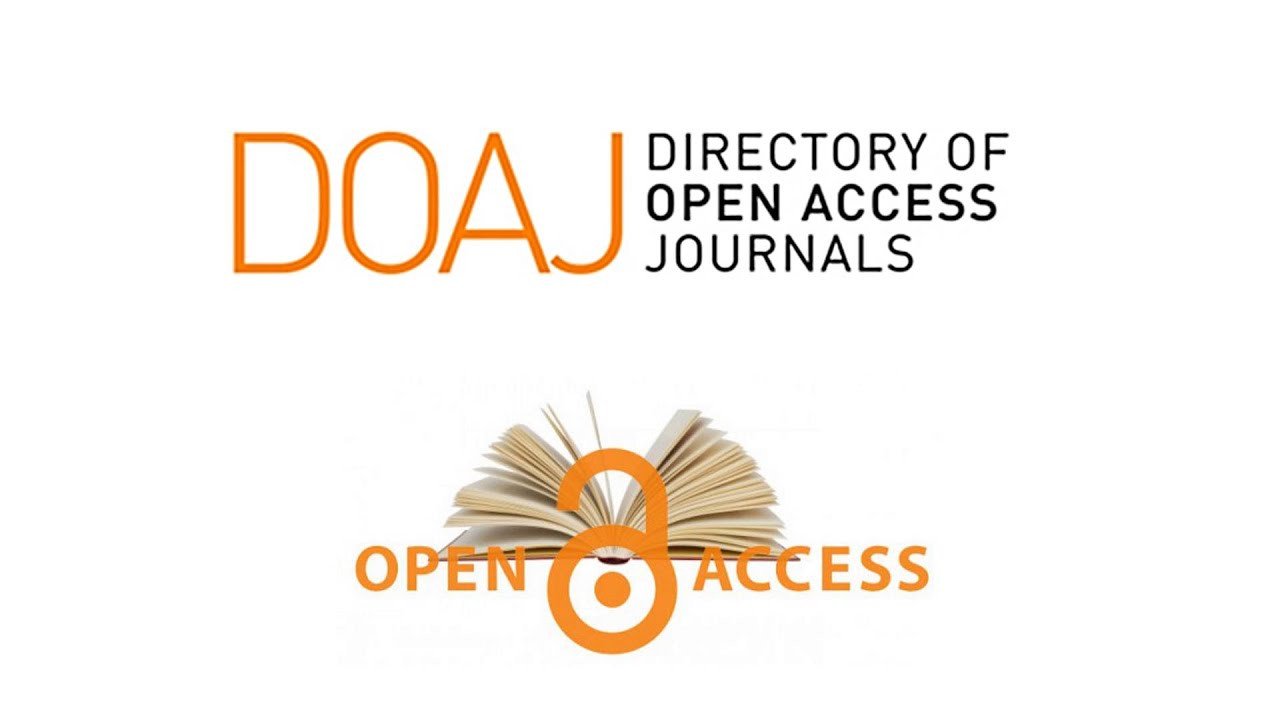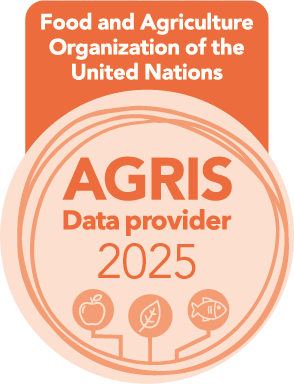Effect of feeding ratio on the growth of common carp cultivated in earthen ponds
DOI:
https://doi.org/10.58629/ijaq.v20i2.486Keywords:
Feeding rate, final weight, daily growth rate, feed conversion rateAbstract
The current experiment was conducted in earthen ponds at the Agricultural Research Station belonging to the Aquaculture Unit- Agriculture College at Basrah University, Al-Hartha District about 16 km northern-east of Basrah Governorate (30o39`20.264"N, 47o 44`51.533"E) from 25th July to 23rd October 2021. The feeding experiment begin after ten days of fish acclimation. Six small earthen ponds (600 m2) were used for the current experiment to investigate the differences in growth criteria for 200 individuals of common carp fed (2 T1, 3 T2 and 4 T3) % of total fish weight. Fishes were fed daily on commercial pellets manufactured by Agricultural Consultant Office belonging to Agriculture College. The total length and weight of fish were measured at the beginning and the end of the experiment, while subsamples of fish were weighed periodically and daily food changed after each weighing. Initial fish weights were 530.0± 132.7, 513.4±118.3 and 477.3±122.5 for T1, T2 and T3 respectively. Daily feed was divided into three meals, the first given early in the morning, the second at mid-day and the third given in the afternoon. Results of current experiments showed a high growth rate (FW= 1341.4 g, WI= 873.0 g, DGR=9.59 g/day and SGR=1.16 %/day) for fish fed on 4% feeding ratio compared with the two feeding ratios. Feed conversion rates were 2.46, 4.01 and 3.28 for T1, T2 and T3 respectively. Statistical analysis showed that there were no significant differences (P>0.05) between values of b with value 3 (Isometric pattern of growth) of common carp before and after the experiment. Statistical analysis of three models for condition factor proved that there were significant differences (P≤0.05) between the values before the experiment with values after the experiment, while there were no significant differences (P>0.05) after the experiment between different condition factors for common carp reared on different feeding ratio.Metrics
References
Albahadly, R.H.T.; Al-Dubakel, A.Y. and Taher, M.M. (2021). Grading effects on growth and size variation of common carp Cyprinus carpio cultivated in floating cages. Biol. Appl. Environ. Res., 5(2): 214-221. DOI: 10.51304/baer.2021.5.2.214.
Al-Dubakel, A.Y.; Al-Noor, S.S.; Mojer, A.M.; Taher, M.M. and Muhammed, S.J. (2022). Comparison of growth of common carp, Cyprinus carpio cultivated in and outside cages in earthen ponds in Basrah, Iraq. Biol. Appl. Environ. Res., 6(2): 204-217. DOI:10.51304/baer-.2022.6.2.204.
Alp, A. and Balık, S. (2000). Growth conditions and stock analysis of the carp (Cyprinus carpio Linnaeus, 1758) population in Gölhisar Lake. Turk. J. Zool., 24: 291-304. https://www.semanticscholar.org/-paper/Growth-Conditions-and-Stock.
Badilles, O.; Bnendia, R.; Ledesma, E; Piondaya, L.; Tendencia, E. and Gasataya, L.E. (1996). Aqua Farm News. 9(6) Nov.-Dec. 1996. SAEFDEC Aquaculture Department, Tigbauan, Lioilo, Philippines: 23 pp.
Bolorunduro, P.I. (2002). Feed formulation and feeding practices in fish culture. Extension Bulletin No. 152, Fisheries Series No.7. National agricultural extension and research liaison services, Ahmadu Bello Univ., Zaria. 25 p. URL.
Das, S.C.S.; Joshi, K.D.; Chakraborty, S.K.; Panda, D. and Jaiswar, A.K. (2019). Length-weight relationship and condition factor of Cyprinus carpio Linnaeus, 1758 from the river Ganga, Allahabad, India. J. Entomol. Zool. Stud., 7(3): 1420-1424. URL.
FAO )2022(. The state of world fisheries and aquaculture 2022. Towards Blue Transformation. Rome, 266 pp. DOI: 10.4060-/cc0461en.
Filizadeh, Y.; Ahmadi, H. and Zolfinejad, K. (2005). The feeding preferences of grass carp (Ctenopharyngodon idella Val.) for ten aquatic plants. In proceedings of the fourth International Iran and Russia Conference, ShahreKord, Iran, 8–10 September 2004, 1447–1451.
Froese, R. (2006). Cube law, condition factor and weight–length relationships: history, meta analysis and recommendations. J. Appl. Ichthyol., 22(4): 241–253. URL.
Gomiero, L.M. and Braga, F.M.S. (2005). The condition factor of fishes from two river basins in Sao Paulo State, southeast of Brazil. Acta Scientiarum, 27: 73-78. URL.
Gyalog, G.; Oláh, J.; Békefi, I.E.; Lukácsik, M. and Popp, J. (2017). Constraining factors in Hungarian carp farming: An econometric perspective sustainability 2017, 9, 2111. DOI: 10.3390/su9112111-www.mdpi.com/journal/sustainability.
Hasan, M.R.; Hecht, T.; De Silva, S.S. and Tacon, A.G.J. (eds.) (2007). Study and analysis of feeds and fertilizers for sustainable aquaculture development. FAO Fish. Tech. Pap., No. 497, FAO, Rome: 510 pp. https://www.researchgate.net/profile/Manjurul-Karim-3/publication.
Karataş, M.; Çiçek, E.; Başusta, A. and Başusta, N. (2007). Age, growth and mortality of common carp (Cyprinus carpio Linneaus, 1758) population in Almus Dam Lake (Tokat-Turkey). J. Appl. Biol. Sci., 1: 81-85. URL.
Khan, M.N.; Shahzad, K.; Chatta, A.; Sohail, M.; Piria, M. and Treer, T. (2016). A review of introduction of common carp Cyprinus carpio in Pakistan: Origin, purpose, impact and management. Croat. carp_Pakistan1.J. Fish., 74: 71-80. URL.
Kırkağaç, M.U. and Demir, N. (2006). The effects of grass carp (Ctenopharyngodon idella Val., 1844) on water quality, plankton, macrophytes and benthic macroinvertebrates in a spring pond. T. J. Fish Aquat. Sci., 6, 7-15. URL.
Kumar, A.-K.A.; Ali, J. and John, A. (2014). Studies on the survival and growth of fry of Catla catla (Hamilton, 1922) using live feed. J. of Mar. Biol., (1–4):1-7. DOI: 10.1155/2014/842381.
Laiz-Carrión, R.; Sangiao-Alvarellos, S.; Guzmán, J.M.; Martín del Río, M.P.; Soengas, J.L. and Mancera, J.M. (2005). Growth performance of gilthead sea bream Sparus aurata in different osmotic conditions: Implications for osmoregulation and energy metabolism. Aquaculture, 250(3-4): 849-861. DOI: 10.1016/j.aquaculture-.2005.05.021.
Le Cren, E.D. (1951). The length- weight relationship and seasonal cycle in gonad weight and condition in the perch (Perca fluviatilis). J. Anim. Ecol., 20(4): 201-219.
Pauly, D. (1983). Some simple methods for the assessment of tropical fish stocks. FAO Fisheries Technical paper, 234, FAO, Rome, Italy, 52 pp.
Petrea, S.M.; Mogodan, A.; Metaxa, I.; Plăcintă, S.; Vasile, M.S. and Huian, G. (2017). A comparative study on the evaluation of cyprinids growth performance in IMTA systems. AACL Bioflux, 10 (1): 87-102. URL.
Pfeiffer, T.J. and Lovell, R.T. (1990). Responses of grass carp, stocked intensively in earthen ponds, to various supplemental feeding regimes. Prog. Fish. Cult., 52(4): 213-217.
Piska, R.S. and Naik, S.J.K. (2013). Introduction to freshwater aquaculture. Intermediate Vocational Course State Institute of Vocational Education and Board of Intermediate Education: 1-12. In Piska, R. S. (Ed.). Dept. Zoology, Coll. Sciences, Univ. Osmania, Hyderabad, 305 pp. https://bjas.bajas.edu.iq/index.php/bjas-/article/view/37.
Rashid, R.F.; Çalta, M. and Basusta, A. (2018). Length-weight relationship of common carp (Cyprinus carpio L., 1758) from Taqtaq Region of Little Zab River, Northern Iraq. T. J. S. T., 13(2): 69-72. https://dergipark-.org.tr/en/download/article-file/538157.
Ricker, W.E. (1975). Computation and interpretation of the biological statistics of fish populations. Bull. Fish. Res. Bd. Can., 191: 1–382.
Sheikh, J.; Singha, N.; Nag, R. and Deka, P. (2017). Length-weight relationship and relative condition factor of Gudusia chapra (Hamilton, 1822) of Dalani Beel (wetland) of Assam, India. Int. J. Fish. Aquat. Stud., 5(3): 485-489.
Singh, N.R.; Das, S.K.; Kumar, S.; Behera, S. and Nagesh, T.S. (2015). Length-weight relationship and condition factor of Cyprinus carpio var. communis (Linnaeus, 1758) reared in bheries of South 24 Parganas district in West Bengal. nt. J. Fish. Aquat. Stud., 2(6): 239-242. https://www.fisheriesjournal.com.
Taher, M.M. (2020). Economic evaluation of four imported floating feeds used for cultivation of common carp in floating cages in Basrah
Province, Iraq. Biol. Appl. Environ. Res., 4(1): 34-39. URL.
Taher, M.M.; Al-Dubakel, A.Y., and Muhammed, S.J. (2018). Growth parameters of common carp Cyprinus carpio cultivated in semi-closed system. Basrah J. Agric. Sci., 31, 40-47. DOI:10.37077-/25200860.2018.74
Taher, M.M.; Al-Dubakel, A.Y. and Saleh, J.H. (2014). Effects of feeding ratio on growth and food conversion rate of common carp Cyprinus carpio reared in floating cages. Iraqi J. of Aquacult., 11(1): 15-26. https://bjas.bajas.edu.iq/index.php/bjas/article-/view/37
Taher, M.M.; Al-Noor, S.S.; Mojer, A.M.; Al-Dubakel, A.Y.; Muhammed, S.J. and Sabti, Z.A. (2021). Growth comparison of common and grass carp cultivated in earthen ponds. Int. J. Aquatic Sci., 12 (2): 5190-5202. www.journalaquaticscience.com/article139257_e39ff-797261aa010.
Tarkan, A.S.; Gaygusuz, Ö.; Acıpınar, H.; Gürsoy, Ç. and Özuluğ, M. (2006). Length-weight relationship of fishes from the Marmara region (NW-Turkey). J. Appl. Ichthyol., 22(4): 271–273. URL.
Vilizzi, L.; Tarkan, A.S. and Copp, G.H. (2015). Experimental evidence from causal criteria analysis for the effects of common carp Cyprinus carpio on freshwater ecosystems: A global perspective. Rev. Fish. Sci. Aquat., 23: 253-290. https://www.semanticscholar.org/paper/Experimental-Evidence-from.
Vilizzi, L.; Tarkan, A.S. and Ekmekçi, F.G. (2013). Stock characteristics and management of insights for common carp (Cyprinus carpio) in Anatolia: a review of weight-length relationships and condition factors. Tr. J. F. A. S., 13: 759-775. https://www.semanticscholar-.org/paper/Stock-Characteristics.
Woynarovich, A.; Moth-Poulsen, T. and Péteri, A. (2010). Carp polyculture in Central and Eastern Europe, the Caucasus and Central Asia. FAO Fisheries and Aquaculture Technical Paper, 554, Rome, 73 pp. https://www.semanticscholar.org/paper/Carp-polyculture-in-Central-and.
Downloads
Published
How to Cite
Issue
Section
License
Copyright (c) 2023 Iraqi Journal of Aquaculture

This work is licensed under a Creative Commons Attribution 4.0 International License.










